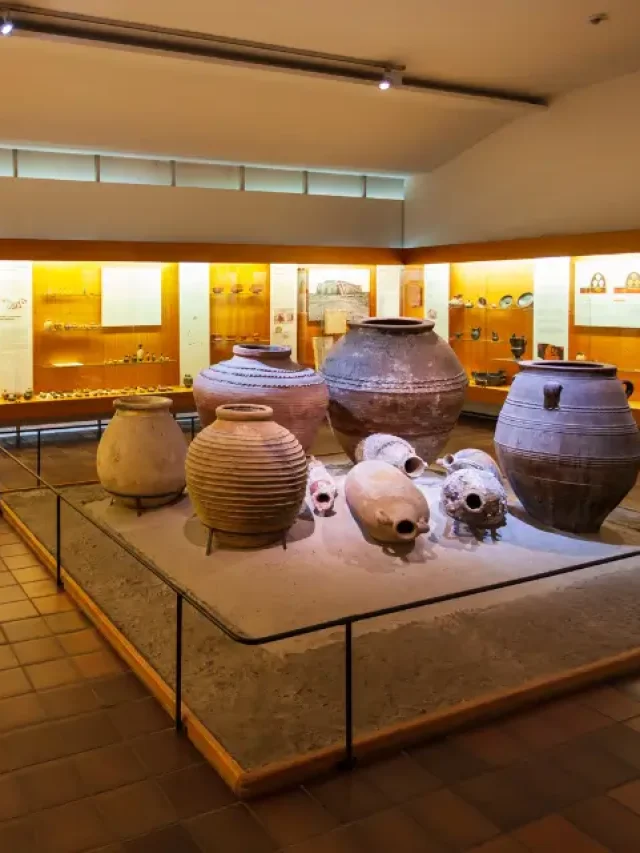Australia is one of the most preferred destinations for Indian students aspiring to pursue MBBS abroad. With globally recognized universities, top-notch medical education, and state-of-the-art facilities, Australia offers a promising career path for medical aspirants. However, the process of admission, eligibility criteria, costs, and career prospects need thorough understanding before making a decision.
This comprehensive guide covers everything an Indian student needs to know about pursuing an MBBS degree in Australia, including eligibility, top universities, admission process, tuition fees, scholarships, visa requirements, and career opportunities.
Table of contents
- Why Choose Australia for MBBS?
- Eligibility Criteria for Indian Students
- MBBS Course Structure in Australia
- Top Medical Universities in Australia
- Admission Process for Indian Students
- Cost of Studying MBBS in Australia
- Scholarships for Indian Students
- Student Visa Requirements
- Career Opportunities After MBBS in Australia
- Challenges Faced by Indian Students
- FAQs
Why Choose Australia for MBBS?
Australia has a reputation for providing world-class education in top medical colleges. Here are some key reasons why Indian students prefer to study MBBS in Australia:
- Globally Recognized Degrees: Australian medical degrees are recognized by the Medical Council of India (MCI/NMC), WHO, and other medical councils worldwide.
- High-Quality Education: Australian universities are among the top-ranked globally, offering an advanced medical curriculum and cutting-edge research opportunities.
- State-of-the-Art Facilities: Modern infrastructure, high-tech laboratories, and experienced faculty provide excellent learning opportunities.
- Diverse Culture and Safe Environment: Australia is known for its multicultural society and student-friendly atmosphere.
- Excellent Career Prospects: Graduates can work in Australia, return to India after clearing the FMGE (Foreign Medical Graduate Examination), or pursue higher studies worldwide.
Eligibility Criteria for Indian Students

Indian students aspiring to pursue an MBBS degree in Australia must fulfil specific academic, language, and entrance exam requirements. They need to have completed 10+2 with Physics, Chemistry, and Biology, achieving a minimum required percentage as set by individual universities.
Additionally, they must demonstrate English proficiency through tests like IELTS, TOEFL, or PTE and qualify for entrance exams such as UCAT or GAMSAT (depending on the program type). Some universities may also conduct interviews or require additional documentation, including a Statement of Purpose (SOP) and Letters of Recommendation (LORs), to assess the applicant’s suitability for the program.
| Criteria | Details |
| Educational Qualification | Minimum 10+2 with Physics, Chemistry, and Biology (PCB) |
| Minimum Marks | At least 85% in PCB subjects (varies by university) |
| English Proficiency | IELTS (minimum 7.0), TOEFL, or PTE |
| Entrance Exams | UCAT, GAMSAT, or university-specific tests |
| Age Limit | Minimum 17 years |
English Proficiency Tests
To ensure that international students can effectively communicate and succeed in their studies, most Australian universities mandate a valid English proficiency test score. Applicants must achieve the minimum required scores in exams like IELTS, TOEFL, or PTE, as specified by their chosen university.
Also Read:
MBBS Course Structure in Australia
The MBBS program in Australia is designed to provide comprehensive medical education through two distinct pathways: Undergraduate Entry (for students who have completed high school) and Graduate Entry (for those with a prior bachelor’s degree in a related field). Both pathways follow a structured curriculum that integrates theoretical knowledge, practical training, and clinical exposure, ensuring students develop the necessary skills and expertise to become competent medical professionals.
| Program Type | Duration | Details |
| Undergraduate MBBS | 5-6 years | For students after the 12th (Direct Entry) |
| Postgraduate MBBS | 4 years | Requires a Bachelor’s degree (Graduate Entry) |
Course Breakdown:
- Year 1-2: Pre-clinical studies (anatomy, physiology, biochemistry, pathology, pharmacology)
- Year 3-4: Clinical training and hospital internships
- Final Year: Internship and residency training
Top Medical Universities in Australia
Australia is home to several prestigious medical universities known for their high academic standards, advanced research facilities, and globally recognized MBBS programs. These institutions offer excellent training opportunities, preparing students for successful medical careers worldwide.
| University | City | QS World Ranking (Medicine) | Approx. Fees (INR per year) |
| University of Melbourne | Melbourne | 13 | INR 40-50 Lakhs |
| University of Sydney | Sydney | 19 | INR 45-55 Lakhs |
| Monash University | Melbourne | 31 | INR 35-45 Lakhs |
| Australian National University | Canberra | 34 | INR 40-50 Lakhs |
| University of Queensland | Brisbane | 42 | INR 38-48 Lakhs |
| University of Adelaide | Adelaide | 85 | INR 35-45 Lakhs |
Admission Process for Indian Students
The admission process includes several steps:
- Research and Select Universities
- Check Eligibility and Entrance Exam Requirements
- Prepare for English Proficiency Tests
- Submit Online Applications with Required Documents:
- Academic transcripts
- English test scores (IELTS/TOEFL/PTE)
- Statement of Purpose (SOP)
- Letters of Recommendation (LORs)
- Passport copy
- Proof of financial ability
- Attend Interviews (if required by the university)
- Receive the Offer Letter and Accept the Admission
- Apply for Student Visa (Subclass 500)
- Prepare for Travel and Accommodation
Cost of Studying MBBS in Australia
Studying MBBS in Australia is a significant investment, with costs varying based on the university, location, and lifestyle. Tuition fees, accommodation, food, and other living expenses can add up, making financial planning essential for Indian students. Scholarships and part-time work opportunities can help manage these expenses.
| Expense | Approximate Cost (INR per year) |
| Tuition Fees | 35 – 55 Lakhs |
| Accommodation | 6 – 12 Lakhs |
| Food | 3 – 6 Lakhs |
| Health Insurance | 50,000 – 1 Lakh |
| Miscellaneous | 2-5 Lakhs |
Scholarships for Indian Students
Several scholarships, offered by the Australian government, universities, and private organizations, help reduce the financial burden of studying MBBS. They may cover tuition, living costs, or health insurance, with eligibility based on academic merit, financial need, or extracurricular achievements. Refer to the table below for details:
| Scholarship Name | Eligibility | Coverage |
| Australia Awards Scholarship | High academic achievers | Full tuition, living expenses |
| Destination Australia Scholarship | Enrolled students | AUD 15,000 per year |
| University-specific Scholarships | Varies by university | Partial tuition waiver |
Student Visa Requirements
Indian students need a Subclass 500 Visa to study in Australia.
Requirements:
- Valid passport
- Confirmation of Enrollment (CoE)
- Proof of financial stability
- English proficiency test scores
- Health insurance (OSHC – Overseas Student Health Cover)
- Medical examination and biometrics
Career Opportunities After MBBS in Australia

After completing MBBS, students can:
- Intern in Australian Hospitals (1-2 years)
- Pass the AMC Exam (Australian Medical Council) for a medical license
- Pursue Specialization (MD/MS) in Australia
- Return to India and clear FMGE/NEXT to practice
| Career Path | Details |
| Internship | 1-year compulsory hospital training |
| Residency | Specialization in chosen field (3-7 years) |
| AMC Exam | Required to practice in Australia |
| Return to India | Pass NEXT/FMGE to practice |
Challenges Faced by Indian Students
- High Tuition Fees – Expensive compared to Indian medical colleges
- Competitive Admission Process – Limited seats for international students
- Cultural Differences – Adapting to a new environment
- Strict Licensing Requirements – Exams and internships needed to practice
Also Read:
Pursuing an MBBS in Australia is a significant investment but offers high-quality education and excellent career prospects. Indian students must carefully evaluate their options, meet eligibility requirements, and plan finances wisely. With proper preparation, Australia can be a rewarding destination for medical education.
Are you planning to study MBBS in Australia? Start your application process today and take the first step toward a successful medical career! For booking the best student accommodation abroad to start your study abroad experience you can contact Fly Homes at 1800572118.
FAQs
Yes, MBBS degrees from Australian universities are recognized by the Medical Council of India (MCI/NMC). However, graduates need to clear the NEXT (formerly FMGE) exam to practice in India.
Indian students may need to take one of the following exams based on the university’s requirements:
– UCAT (Undergraduate Clinical Aptitude Test)
– GAMSAT (Graduate Medical School Admissions Test)
– University-Specific Entrance Exams
The duration varies based on the entry pathway:
– Undergraduate MBBS: 5-6 years (for students after Class 12)
– Graduate MBBS: 4 years (for students with a prior bachelor’s degree)
On average, the total cost (tuition + living expenses) ranges between INR 2-3 Crores for the entire program.
Yes, several scholarships are available, including:
– Australia Awards Scholarship
– Destination Australia Scholarship
– University-Specific Scholarships
Yes, Indian students must prove English proficiency through:
– IELTS: Minimum 7.0 band overall
– TOEFL iBT: Minimum 94
– PTE: Minimum 65
Yes, international students can work up to 20 hours per week during semesters and full-time during vacations to manage living expenses.
Students must apply for a Subclass 500 Visa by submitting:
– Confirmation of Enrollment (CoE)
– Financial proof
– English proficiency test results
– Medical and biometrics clearance
Graduates can:
– Work as a doctor in Australian hospitals after passing the AMC Exam
– Pursue specialization (MD/MS) in Australia
– Return to India and pass the NEXT/FMGE to practice
It depends on personal preferences and career goals. Australia offers world-class infrastructure and global career opportunities, but it is expensive. In contrast, India has affordable medical education with competitive exams like NEET.
Follow Us on Social Media




























